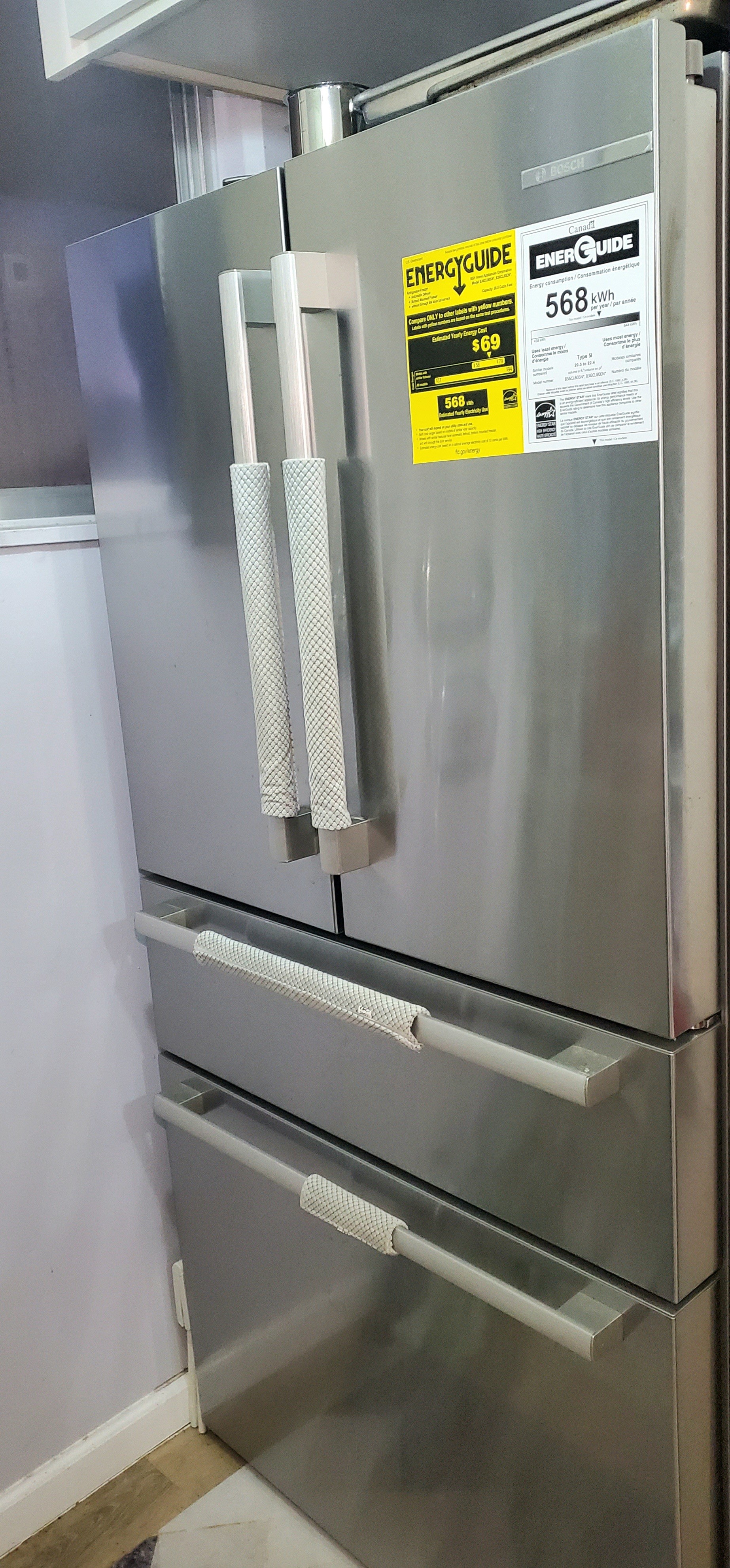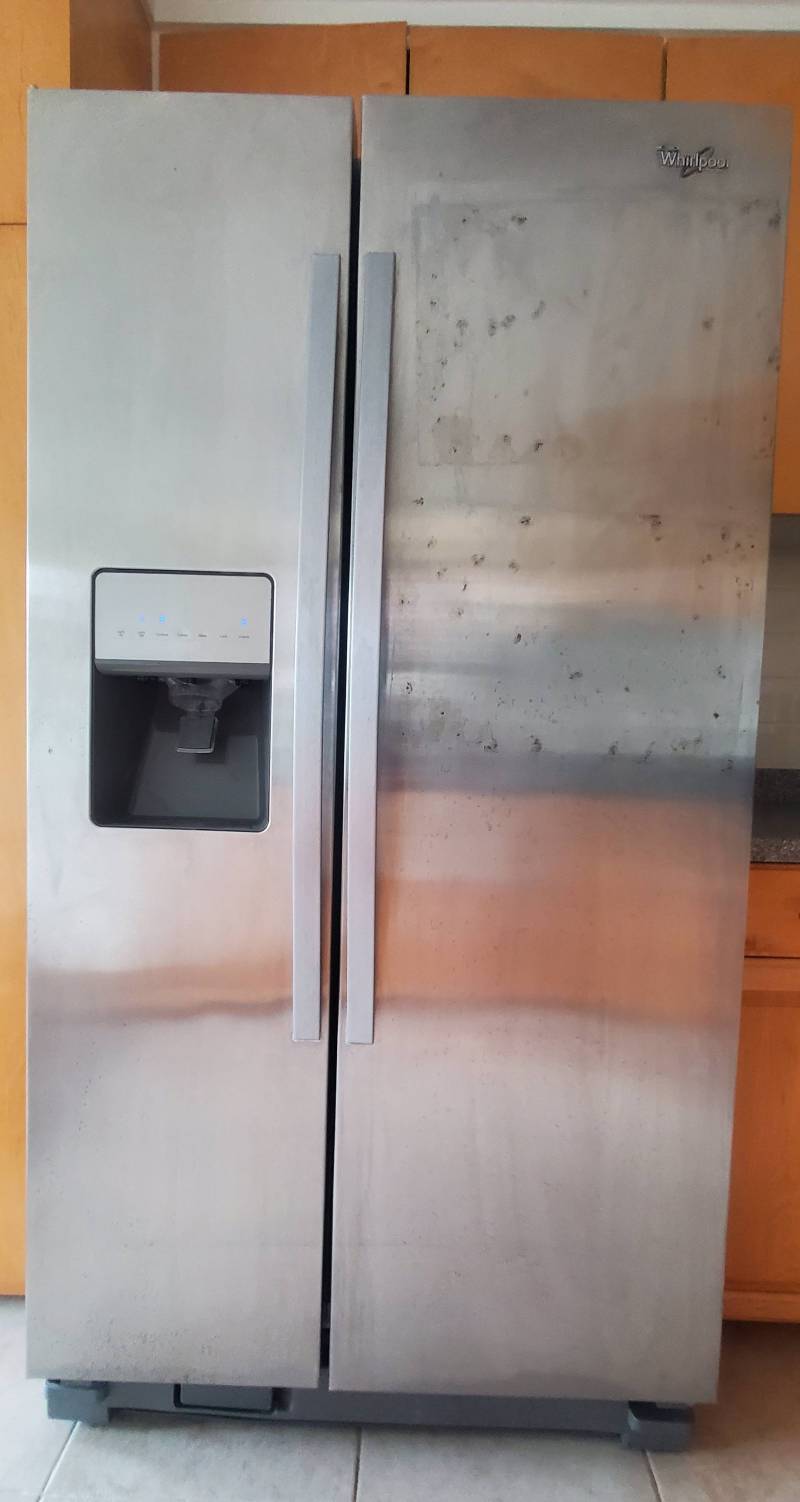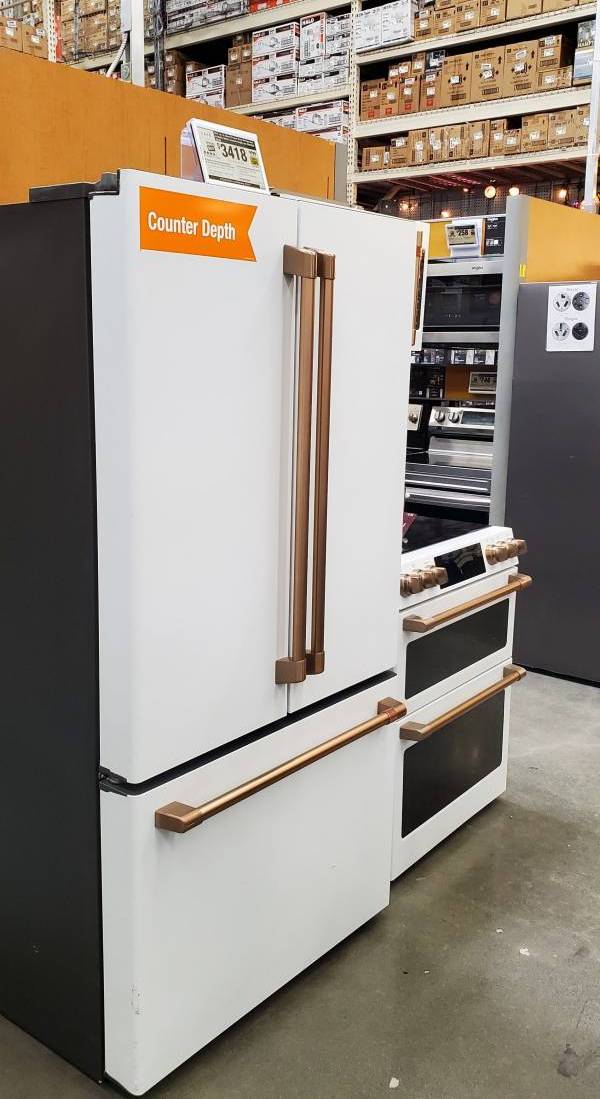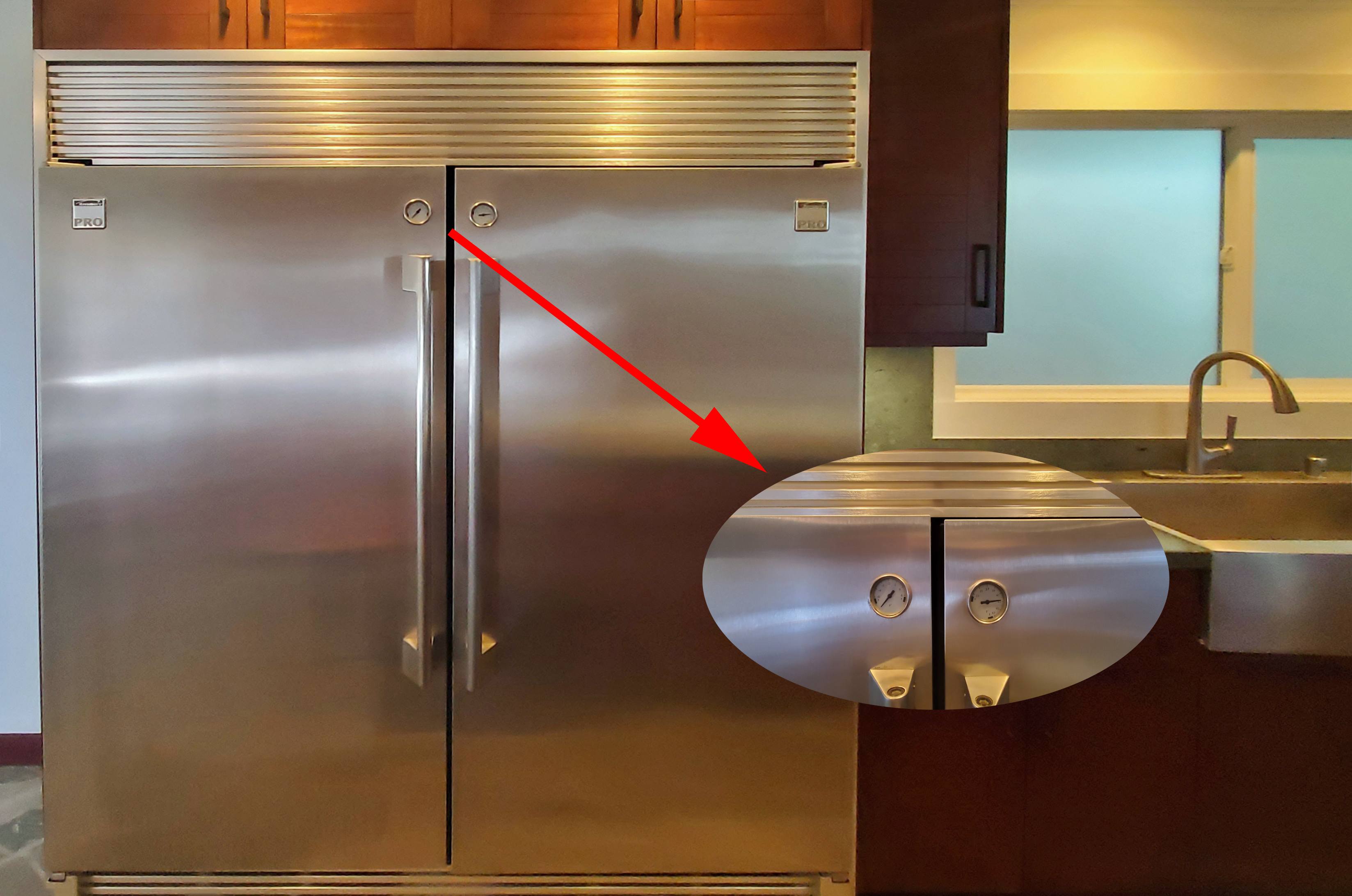Selling with Psychology: Why a Clean Fridge is Key to a Fast Sale at a High Price in Hawaii
Everyone knows a nice kitchen helps sell a home. But a clean fridge is often the difference between a fast sale at a high price and a slow sale with lowball offers. But why would a fridge matter if everything else looks great when you sell your home in Hawaii? It is just a piece of replaceable equipment, right? Well, not quite — the answer lies in psychology.
Using Limited Data to Make Big Decisions
In short, Buyers use the evidence they can see to draw conclusions about what they cannot see. In other words, Buyers have a habit of looking at small flaws (and messy areas) and applying these perceptions to the rest of the house. A Buyer has only 15 to 30 minutes to see an entire house during a showing. In that time, the Buyer has to take in and process a lot of information.
For many buyers, the kitchen is the most important room of the house– it is no secret that real estate professionals often say “the kitchen sells the house.” While this article focuses on the fridge as an isolated area, the same concepts apply to other parts of the house– but this just happens to be a particularly important one. In other words, a completely normal, semi-organized fridge in regular use can easily give Buyers the idea that other things in the house may be disorganized or messy as well. But the flip-side is also true: if your fridge is perfectly organized, or is spotlessly clean, it hints that other “hidden” areas may also be well-maintained. I know this sounds silly, but after having assisted clients on over 1,500 transactions, this is something I have seen play out many times.
Mistaken Perceptions and the “Rule of Small Numbers”
Applying small things to the whole is a matter of mistaken perception. There are plenty of treatises written on this subject. They refer to it as the application of the “Statistical Rule of Small Numbers.” This is where an observer uses one or two data points from a sea of thousands of data points, to put together a complete (but flawed) picture of the whole. Buyers look to a few important areas used by the seller, and then try to imagine how the seller used the house and cared for it. Especially in higher-end homes, the smallest of mistreatments of the home will be considered to many buyers as inexcusable flaws. Why? Because buyers are applying a single datapoint to the whole house. And it isn’t hard to imagine why– buyers often look at a house for a matter of mere minutes (often a 30 minute appointment) and they make a large decision based upon this limited look at a house.
Buyers often key on the kitchen, and at nearly every house showing I have been to, the buyers look inside the fridge. The fridge is perhaps the most personal space of all. And whether Buyers realize it or not, they oftentimes use what they see inside the fridge to make a decision on whether to buy and how much to offer. I can’t tell you the number of times I’ve heard a buyer say, “the sink just needs a bit of caulk,” as if it was no big problem, while they then focus on the smallest dot of dried coffee or stain mark on the inside of a fridge.
Example of a well-maintained fridge that will help a buyer’s perception of a home:

This is a picture of a well-maintained and newer higher-end fridge with its original stickers and a set of protective door handles. This sends a positive message to a buyer: the owner maintains the fridge (and maybe the rest of the house) in a careful manner.
Unconscious Analyses and Pricing
If you think projecting minor and unrelated messes onto other areas is a bit nonsensical, I am here to tell you: “Yup, it is nonsensical, but buyers still do it, even if they don’t realize they do.” There are simply unconscious analyses made by a buyer. When people buy, they tend to take for granted the assumptions they make. So, when people sell, they need to be aware of what perceptions (even if misguided) a buyer might have.
Small details can make or break the sales price of a house even in a good market, so when the markets shift, these details become all the more important. That’s a reason to always make sure you use an experienced real estate agent who will help you with the process of making your home look as good as it can so you can get the best price on your sale. In my years of experience, I have seen offers on houses in the $2 million range reduced by $200k or more based largely upon the negative perceptions buyers have about a house based upon a disorganized and less-than-perfect fridge and kitchen area. The effects of a well-organized (or perhaps new and empty) fridge may far exceed the true price value of the fridge itself. It seems a tad counterintuitive that a relatively inexpensive appliance can so drastically affect a home’s value. But I have seen this happen many times. A savvy friend of mine actually bought a brand new fridge and had it installed just for showings– and guess what? The Buyers paid a premium just to have the “house with the new fridge.”
Here is an example of a particularly awful fridge with pitting all over it:

This is a fridge in a roughly million-dollar listing I viewed– not much of a selling point, is it? The pitting could have been fixed in a matter of minutes with a bit of elbow grease. Instead, this fridge was left to devalue the listing.
Keep in Mind: The Functional Fridge is Not Artful…
But, ironically, buyers want a seller’s fridge to be artful rather than functional.
Think about your own fridge for a minute. If your fridge looks anything like mine, it is crammed to the gills with all your favorite dressings, sauces, spices, veggies, and beverages. My fridge serves me well on a day-to-day basis, and is pretty from the outside, but inside my fridge it sure doesn’t look like something out of a magazine, where every bottle is full, and items are arranged artfully in a way that uses approximately 20% of the fridge volume. Unless you never cook, magazines and other forms of media set an unreachable standard (which buyers often are influenced by). If this all seems a tad overwhelming, or if you just want to hear a bit more about this, feel free to shoot me a call at 808-811-8811 or send me an email at joeyfurlett@hawaiilife.com, and I will be glad to chat and assist.
A Few Major Things Buyers Notice About Fridges that Can Lead to Negative Feelings About a Property
1) Spills or Stains
These are the physical evidence of a mess. Smallish dried dots are something most everyone has in their fridge if they aren’t super careful. But for a buyer, a very silly-seeming and very minor negligence can suddenly become an important (and likely false) window into the seller’s life. A stain in a commonly-used area can cause a buyer to question whether the seller had other problems in the house that were not fixed.
2) Disorganization
Organization is in the eye of the beholder. Clean to one person may be messy to another. If items are crammed into the fridge in a way that isn’t neat and tidy, a buyer may start to wonder if you hid other things in the closets, bathroom cabinets, and other unseeable areas.
3) Wrong Size Fridge
Most folks do not realize it, but there are multiple sizes of fridges. They come in various widths (which should be noticeable to an average consumer in a store), but they also come in different “depths.” The depth of the fridge defines how far the fridge will stick out into the room. The wrong size fridge can make a decent-sized kitchen seem very small since the fridge will stick out past the countertops and into the room. If your home has too big of a fridge, you may need to invest in a “counter-depth” fridge. They are available at many home improvement and appliance stores and are usually marked to show you they are a bit smaller. They range in price, but usually cost roughly the same as a standard-sized fridge.
This is a picture of a rather fancy “counter-depth” fridge:

This is a counter-depth fridge at the Home Depot. Please note the conspicuous marking on the front showing its size.
4) Un-leveled Fridges and Fridge Doors
A fridge can be easily leveled by turning the self-leveling feet at the bottom, preventing a fridge from rocking, and leveling the fridge may also lead to the fridge sitting straight. Best-practice for leveling a fridge is to use a bubble level–it is a rather quick but also rather tedious process with a high potential return. Fridges also often have leveling screws on their door hinges to ensure that, for double-door fridges, the two doors line up in the middle. These problems are further magnified (and can really affect prices) when you have a high-end extra-wide double fridge in a kitchen. When the doors do not line up, it can sour a buyer’s perception of a house. A buyer will ask– if this house is so expensive and so high-end, why didn’t they care about the details? That can lead to a much lower offer, or maybe no offer at all.
This is a close-up picture of a very high-end fridge that was not leveled:

This is a very expensive fridge with large double doors that I saw at a listing I viewed. The fridge was the centerpiece of the kitchen. But it was not properly leveled. While this type of small flaw might not be noticed on a daily basis, buyers of high-end houses notice things like this. My potential buyer commented on “the poor condition” of the kitchen after seeing the leveling mistake.
So, How Do We Change a Buyer’s Perception of a Fridge?
In a perfect world, all Sellers would refrain from using their fridges (except for perhaps a small bowl of tropical fruit) for the entire time their home was listed for sale. But definitely leave the fridge turned on! Buyers also check for that, even if it makes no sense to check! No information is sometimes better, because it leaves no data points a buyer can judge from, either positive or negative. But for anyone who lives at their home while it is being sold, that just isn’t reasonable.
The key is making sure that buyers remain focused on what is good about your house, and the fridge is a very important step in this process. The goal is to minimize the areas that will raise red flags for buyers. Usually, this is a collaborative process between me and my clients.
Steps to Prep the Fridge and the House
1) Seller Does Some Self-Preparation Through Youtube (or Your Favorite Video Streaming Service)
Watch a few videos to get in-tune with organization fundamentals and start applying them to the contents of your fridge. Perhaps the greatest expert in these sorts of fundamentals is Marie Kondo. In fact, you can click here to see her Youtube video specifically focused on refrigerators and freezers. For a seller who is about to put their house on the market, I always suggest watching a few of her videos. This will get you familiarized with what type of organization people expect and will make it easier to start spotting things on your own.
2) The Real Estate Agent Pre-Check
Have an experienced real estate agent come into your home to look at the house with a “buyer’s eye” to identify where there are problems. This is where I come into a house and make a written list of the details for my clients to be aware of. The fridge and areas nearby in the kitchen are major focus areas.
3) The Clean-Up
After I give my sellers the to-do list, it is time for them to either start tidying or get a bit of professional help with cleaning and small repairs in important areas. A good realtor should always have a few cleaning and organizing company contacts on hand. When a place is in need of a deep scrub, or if my clients just don’t have the time to get things cleaned up, I will often suggest a cleaner or two. And if there are larger maintenance items, I will suggest handymen.
4) The Double-Check
After cleaning and organizing, now it is time for the agent to do a second detailed check-up to make sure the property is in the best condition to sell. This is where I go through and look at all the areas I previously noted. If it looks good, then we move on to the next steps towards getting the place on the market.
5) Periodic Check-Ins
The longer a house sits on the market, the more likely it is that things get moved around, or corners get dusty. After a week or so, it is usually important for the agent (and the seller, if they still live in the house) to check on the home and maintain the organization—it only takes one buyer to buy a home, so you want it to look its best for that buyer!
The Key Takeaway Message of This Article
When a buyer looks at a house for 15 minutes in a showing, the buyer can only take in and remember so much information. A clean bedroom will often be forgotten, but a messy fridge will be remembered.
How can I prevent Buyers from getting the wrong idea?
Well, that comes down to two things: getting good advice and using good advice. Each kitchen is different, and each house is different, but certain principles will always apply. Since this is a collaborative process, I always invite readers and clients to reach out before getting the house on the market. Fact is, a little prep goes a long way when you are ready to sell.
About the Author:

Joey Furlett, JD, R(B), MRP, REI
Joey is a Realtor-Broker with Hawaii Life. He has a simple philosophy: “I do the most I can to make the process as simple as it can be for you.” He has successfully helped over 1,500 sets of clients through the real estate process. He has been helping folks with complex multi-state real estate transactions for years and has worked in the real estate industry as both a Realtor and an attorney,* and is licensed in both Hawaii and Illinois in both professions. (*Please note that Joey does not act as an attorney in his role at Hawaii Life, but he applies his deep background in real estate towards helping his clients smoothly buy and sell homes) If you want to read more about Joey’s unique background, please check out his realtor profile at www.hawaiilife.com/joeyfurlett
A personal note from the author:
Thanks for taking the time to read this article on why a clean fridge is so important for getting the best price on your sale. Maybe this seems like a silly topic, but it is an important consideration when you are entering a less certain market. Even in a seller’s market, this advice is important, however. When it comes to selling a home, it is important to make sure the home looks like a place that a buyer wants to move into. So, it often requires a good set of eyes to help make your soon-to-be-sold home look its best. Feel free to shoot me a call or a text any time and I will be glad to chat with you about your home. That said, I always think a personal visit is best. It lets me see your home, and figure out how I can help you get the best price. Feel free to reach out any time day or night– I love what I do and I’m always glad to help!
Here is my contact info:
Joey Furlett, JD, Realtor-Broker


KokuaDog
August 4, 2022
What I have heard in the past is the opinion of: “If the fridge is crammed full with food it must be too small for the family and I may have to buy a new larger fridge”
There’s no telling what will turn some people off.
Joey Furlett
August 4, 2022
> Absolutely! It is hard to give buyers a positive impression of a well-used fridge. Again, a fridge is functional and not artful, but buyers look for an artful fridge. It is a silly thing. But any time the buyers think “Wow, I really need to replace this appliance” when walking through a house, that changes the psychological perspective from “I can move in tomorrow without lifting a finger” to “This move will not be effortless.” Psychology is a funny thing!